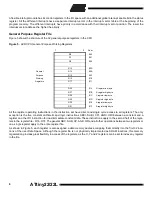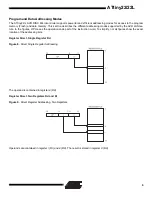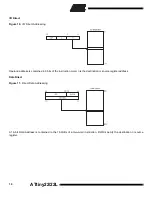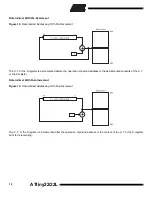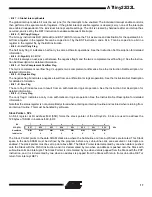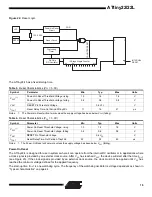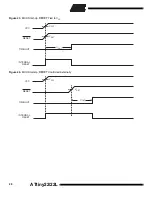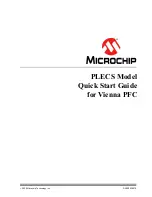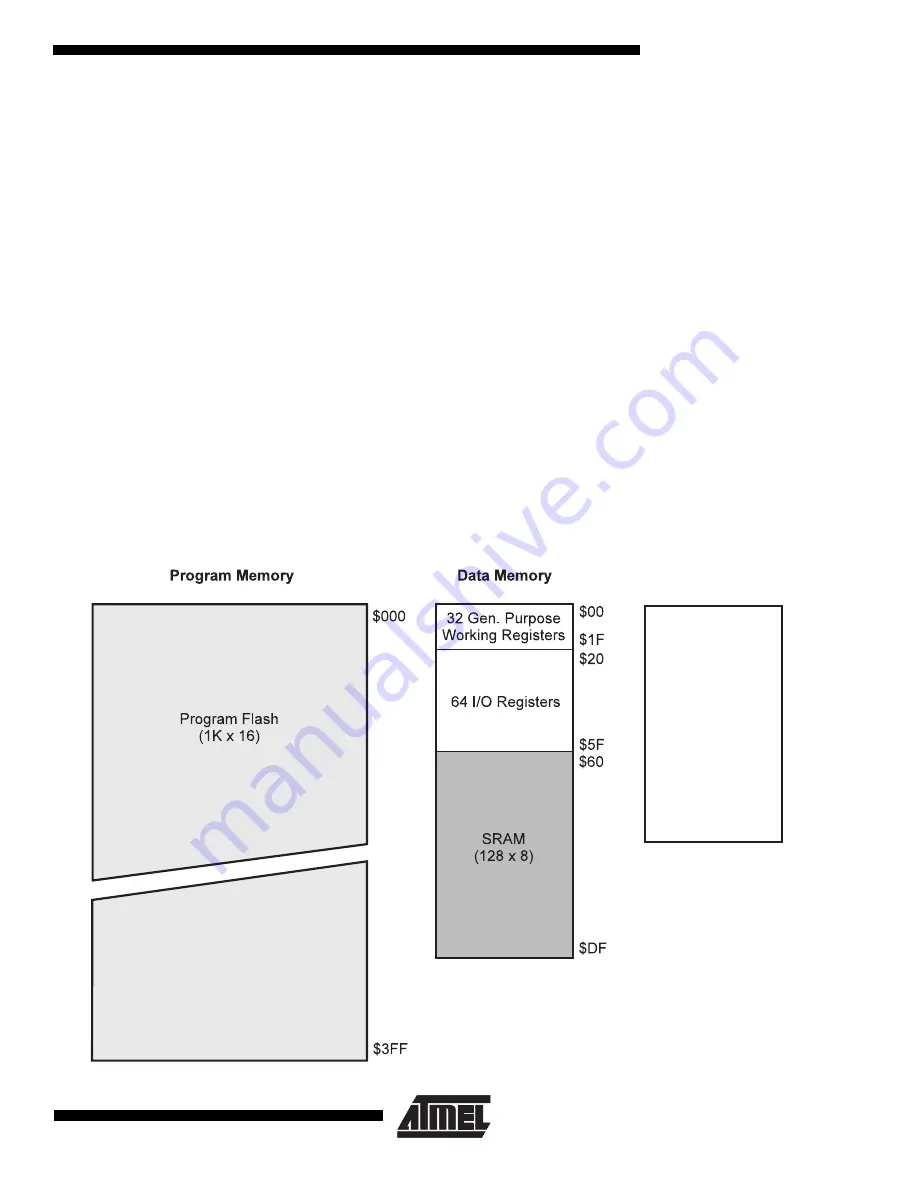
5
ATtiny22/22L
The ALU supports arithmetic and logic functions between registers or between a constant and a register. Single register
operations are also executed in the ALU. Figure 3 shows the ATtiny22/L AVR RISC microcontroller architecture.
In addition to the register operation, the conventional memory addressing modes can be used on the register file as well.
This is enabled by the fact that the register file is assigned the 32 lowermost Data Space addresses ($00 - $1F), allowing
them to be accessed as though they were ordinary memory locations.
The I/O memory space contains 64 addresses for CPU peripheral functions as Control Registers, Timer/Counters,
A/D-converters, and other I/O functions. The I/O memory can be accessed directly, or as the Data Space locations follow-
ing those of the register file, $20 - $5F.
The AVR has Harvard architecture - with separate memories and buses for program and data. The program memory is
accessed with a two stage pipeline. While one instruction is being executed, the next instruction is pre-fetched from the
program memory. This concept enables instructions to be executed in every clock cycle. The program memory is in-system
downloadable Flash memory.
With the relative jump and call instructions, the whole 1K address space is directly accessed. Most AVR instructions have a
single 16-bit word format. Every program memory address contains a 16- or 32-bit instruction.
During interrupts and subroutine calls, the return address program counter (PC) is stored on the stack. The stack is
effectively allocated in the general data SRAM, and consequently the stack size is only limited by the total SRAM size and
the usage of the SRAM. All user programs must initialize the SP in the reset routine (before subroutines or interrupts are
executed). The 8-bit stack pointer SP is read/write accessible in the I/O space.
The 128 bytes data SRAM + register file and I/O registers can be easily accessed through the five different addressing
modes supported in the AVR architecture.
The memory spaces in the AVR architecture are all linear and regular memory maps.
Figure 4. Memory Maps
EEPROM
(128 x 8)
$000
$07F
EEPROM Data Memory






